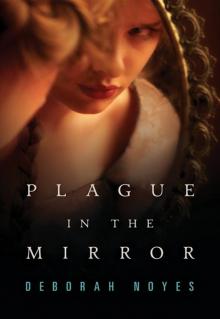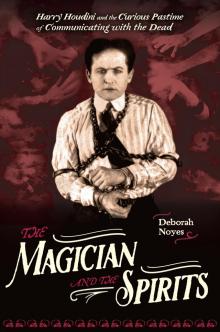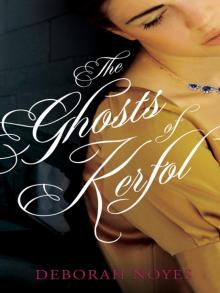- Home
- Deborah Noyes
The Magician and the Spirits Page 9
The Magician and the Spirits Read online
Page 9
As the response of Leonora Piper’s family to her gift shows, this line of work wasn’t a respectable employment avenue in the nineteenth and early twentieth centuries. (Though it might invite wealth and even fame, it might also lead to despair, drink, and dissolution, as it had for the Fox sisters.) But for underprivileged women like Palladino and the sisters, an exotic career as a spirit medium may have beat out their other options. It was a novel way to make a living at a time when poor women had very few avenues open to them, other than marriage or domestic service.
The medium Eusapia Palladino levitates a table during a séance, 1909.
Like magicians, mediums were experts at calculated misdirection, shifting clients’ attention away from one (suspect) behavior with another brighter, bigger, or louder one. Houdini had it “on good authority,” for example, that the famous Italian medium Eusapia Palladino “threw her legs into the laps of her male sitters . . . placed her head upon their shoulders, and did various other things calculated to confuse and muddle men, all of which was explained on the theory of ‘hysteria.’” It was no wonder, he argued, that “a lot of old scientists were badly flabbergasted by such conduct.”
Misdirection by mediums led to “mal-observation” by scientists—what Houdini calls “the curse of investigation,” giving mediums the “power to divert the attention, carrying it at will to any place they wish and numbing the subconscious mind.”
It didn’t help that the people who attended séances were most often a willing audience. They came with hope, longing to hear from the other side. “This love of the dead really is at the bottom of the present experiments,” Houdini told the New York Times in an interview exposing the tricks of the medium trade. Even if a sitter wasn’t waiting on the edge of her or his seat in the dark to hear from a lost friend or relative, all human beings suffered similar hardships: broken hearts, empty pockets, fear. Most people were not only willing but eager to be rewarded with manifestations and soft words; they were open to suggestion. “One little sign even,” said Houdini, “appeals to their waiting imagination, shatters all ordinary caution and they are converted.”
Supplying Peculiar Effects
Like Houdini, magician William Marriott exposed fake mediums. He also brought to the public eye a rare catalog titled Gambols with the Ghosts: Mind Reading, Spiritualistic Effects, Mental and Psychical Phenomena and Horoscopy, published in 1901 by Ralph E. Sylvestre of Chicago. Offering tools for fake slate writing, self-playing guitars, self-rapping tables, materializations, and a “Complete Spiritualistic Séance,” the catalog circulated quietly with the understanding that it would be returned to Sylvestre together with orders. “Our experience during the past thirty years in supplying mediums and others with the peculiar effects,” stated its introduction, “enable us to place before you only those which are practical and of use. . . . We wish you to thoroughly appreciate that, while we do not, for obvious reasons, mention the names of our clients and their work (they being kept in strict confidence, the same as a physician treats his patients), we can furnish you with the explanation and, where necessary, the materials for the production of any known public ‘tests’ or ‘phenomena’ not mentioned in this, our latest list. You are aware that our effects are being used by nearly all prominent mediums . . . of the entire world.” Marriott purchased some of these illusions and posed for photographs.
(Left) The cover of Ralph E. Sylvestre’s Gambols with the Ghosts catalog, 1901.
(Right) Magician William Marriott posing with “ghosts” ordered from the catalog, 1910.
Skilled mediums could lull clients into a kind of self-hypnosis or, by reading facial cues, sense when their guesses were getting warmer. But it was because the mediums were tuned in to the sitters, Houdini said, not to the departed.
As for hands and accordions flying around in the dark, it was not “unusual for the eye or ear to play tricks.”
Houdini admitted that even he had been “deceived once or twice by a new illusion, but if my mind, which has been so keenly trained for years to invent mysterious effects, can be deceived, how much more susceptible must the ordinary observer be.”
Even the infamous Davenport brothers were foiled in the end by another magician—or an aspiring one. English stage magician and inventor John Nevil Maskelyne, the first in a succession of Maskelyne magicians, exposed the brothers after figuring out their technique at an 1865 show. Beams of sunlight filtering between closed drapes had exposed a crack in the famous Davenport cabinet, and through it, Maskelyne glimpsed a hand ringing a bell. Eureka! The brothers, he deduced by the clamor of instruments, had somehow gotten loose from the ropes the audience had used to bind them. They were on the loose in there—making a racket with musical instruments—not spirits.
Poster advertising Maskelyne and Cooke’s Egyptian Hall Theatre, 1887.
The Davenports were persuasive performers, and no one believed Maskelyne when he spoke up after the show. So with help from friend and cabinetmaker George Alfred Cooke, he built a spirit cabinet of his own to re-create the spectacle. The friends teamed up to publicly expose the Davenport brothers later the same year, and five days afterward, the Birmingham Gazette cheered their act, pronouncing the Davenport brothers finished.
Maskelyne took the raves and went on to become one of England’s best-loved magicians, regularly debunking false mediums and re-creating their phenomena in his act.
Not all magicians were antagonistic to Spiritualism, including Houdini’s chief rival, the magician who had inherited Harry Kellar’s secrets when the elder magician retired: Howard Thurston.
Thurston did his share of debunking but also championed some mediums as genuine. The Society of American Magicians (SAM) advised a hands-off approach when it came to phony psychics. The renewed interest in Spiritualism after World War I and the success of phenomena like spirit photographs had spilled over into the magic trade. Many magicians, including Thurston, used ghostly photography in their advertising, and because the two fields overlapped in so many ways, exposing the secrets of mediums often meant exposing the secrets of magicians, a grave professional offense. Magicians didn’t rat out other magicians.
SAM’s general rule: if an effect could be achieved in broad daylight, it fell under the category of magic; if it called for darkness, it was in the mediums’ domain and open for debunking. (Houdini broke this rule while serving as SAM’s president, revealing the workings of a “talking teakettle” in a 1922 article for Popular Radio magazine. The kettle, which spoke in a ghostly whisper and revealed secrets from the stage, was more a magician’s trick than a tool of mediums, and he had bought the kettle in a magic shop. It took him a while to live this error down.)
Detail from a spirit portrait on display at the Lily Dale Spiritualist Assembly museum in Western New York, thought to be created by the Bangs Sisters.
Artful Spirits
Howard Thurston had great success with a Spirit Paintings act borrowed from the Bangs sisters, two Chicago spirit mediums. He would display a stack of blank canvases to the audience before holding one in front of a bright electric light, inviting a volunteer to suggest a subject or departed spirit, whose portrait gradually emerged on the canvas, first in misty lines, then in full detail and bold color. When Thurston removed the canvas from the backlighting, it was fully painted and dried. Audiences gaped in wonder.
Many Spiritualists believed the dead could write, draw, or paint through psychic channels. One Victorian medium, Georgiana Houghton, would host séances, enter a trance, and, with help from her spirit guide, make rich, surreal watercolors. Neglected by the art world as an eccentric in her lifetime, Houghton—or her work— enjoyed a revival a century and a half later when her spirit drawings were exhibited in London in 2016 and compared to works of the famous painter Kandinsky.
Like Houdini, Thurston had no tolerance for outright exploitation. In an article titled �
��Thurston Will Wage Fight on Psychic Fakes,” he shared choice tidbits like this: “The most common form of ghosts used by the fraudulent spiritualists is contained in a small watch. It is blown up by a collapsible rod, which appears to be an ordinary lead pencil. This ghost can be made to do any of the stunts used by the mediums. It can be deflated quickly by use of the same rod.” And he agreed with Houdini about Sir Arthur: “I find that Doyle has been badly duped. He is one of the easiest men I have met to mystify.”
“Fortune telling and mind reading are all rot. Why read a palm for a dollar when you can forecast the stock market tomorrow.”
—HOWARD THURSTON
Theatrical poster advertising the magician Howard Thurston, 1915.
But in 1924 Houdini, the king of debunkers, found a formidable rival in Mina Stinson Crandon, known by her medium name, Margery.
Margery and her husband, Le Roi Goddard Crandon, a respected surgeon and Harvard faculty member, held séances at their home at 10 Lime Street in Boston. At first these were of the usual order—rapping and table tipping, music issuing from invisible instruments, sometimes with cameras documenting the proceedings—but in June 1923, Margery dropped into a trance, and a guide or “control” emerged. The gruff discarnate male voice belonged, Margery said, to her brother Walter, who had been killed in a train accident more than a decade before.
Mina Crandon, known as the medium Margery, in 1924.
Walter ran the show from then on, issuing orders and overseeing trance writing and allowing his hand to be “captured” in a paraffin wax mold.
At the end of 1924, Margery produced her first ectoplasm, and it was no dainty cheesecloth wearing a face clipped from a magazine. It was bizarre and blubbery, definitely organic. Margery went on to “materialize” a hand, and Walter even managed to stamp his thumbprint in a tray of warm dental wax.
A year later, somebody located one of Walter’s prints on a razor in a box in his mother’s attic. Was it a match? It seemed to be, and like Mumler’s first spirit photograph, it was proclaimed a miracle by many, indisputable evidence of immortality.
“Walter’s” thumbprint, 1932.
The story spread and attracted investigators, including William Mc-Dougall, head of the psychology department at Harvard, who got the inquiry rolling and had his doubts.
The magazine Scientific American, meanwhile, had announced a prize of $2,500 to anyone who could produce an “objective psychic manifestation of physical character” for an elite committee featuring Walter Franklin Prince, principal investigator for the ASPR, and Houdini.
“I am amused by your investigation with the Society for Psychical Research,” said Sir Arthur Conan Doyle, when he learned that his onetime friend would participate, raising an old question between them. “Have they never thought of investigating you?”
Houdini in disguise, 1925.
Along with other people who had witnessed Houdini’s death-defying performances over the years, Sir Arthur remained convinced that Houdini’s talents were supernatural. Like the baffling Davenport Brothers, Houdini harbored a “dematerializing and reconstructing force,” Sir Arthur had proposed, a force capable of separating “the molecules of that solid object toward which it is directed.” How else to explain the “wonderful power” that turned handcuffs and straitjackets to putty—or thin air—in Houdini’s hands?
“My methods are perfectly natural,” Houdini insisted in A Magician Among the Spirits, “resting on natural laws of physics.” These and all of his effects were just “superior” tricks.
Though Doyle generally did his best to be civil, in private he told Scientific American that Houdini would “keep away every decent medium—for they are human beings, not machines, and resent insult. . . . They do not go into an atmosphere which is antagonistic.”
Margery agreed, in the end, to demonstrate her powers for the committee, although Houdini’s reputation certainly preceded him: his quest to debunk frauds had become a full-on crusade. He would attend (and bust up) séances in elaborate disguises, disrupt mediums at work, and, to their shock and dismay, re-create their tricks. His lectures had turned countless people against “the cult,” and in 1926, he would even testify to a packed and hostile audience—with Bess as a character witness—before Senate and House subcommittees for a bill prosecuting those “pretending to tell fortunes for reward or compensation.”
MR. HOUDINI: Step this way, Mrs. Houdini. One of the witnesses said I was a brute and that I was vile and I was crazy. Won’t you step this way? I want the chairman to see you. . . . There are no medals and no ribbons on me, but when a girl will stick to a man for 32 years as she did and when she will starve with me and work with me through thick and thin, it is a pretty good recommendation. Outside of my great mother, Mrs. Houdini has been my greatest friend. Have I shown traces of being crazy, unless it was about you?
[Laughter]
MRS. HOUDINI: No.
MR. HOUDINI: Am I brutal to you, or vile?
MRS. HOUDINI: No. . . .
MR. HOUDINI: Thank you, Mrs. Houdini. [Applause.]]
—From court transcript of the Houdinis’ testimony at Senate and House subcommittee hearings held over four days in February and May 1926
Houdini’s exposé of the medium Margery, 1924.
Houdini had a special spirit cabinet built—the “Margie Box,” as it came to be nicknamed— to contain the Boston medium’s physical movements and limit her freedom to manipulate the séance environment. The committee observed twenty séances, and the debate lasted for a year.
The editor in charge of the story at Scientific American, J. Malcolm Bird, was so quickly convinced Margery was legitimate that he published a glowing report even before the committee convened. Houdini—who wasn’t convinced and challenged her aggressively every step of the way—cried foul, and a firestorm began in the press, dividing the psychical research community and inspiring Houdini to publish, at his own expense, a pamphlet exposing her methods.
Early in 1925, he challenged Margery to appear with him at Boston’s Symphony Hall, but the medium refused. Houdini held a séance in her absence, exposing her methods, and in the end, Scientific American declined to award Margery the prize on insufficient evidence. Some believed the medium was the most important of all time, others that she was a brazen fraud.
Margery also nearly duped an investigator from the London SPR office (who followed up with twenty-nine sittings), at first, but he eventually proved that her ectoplasm was shaped animal lung tissue. And Walter’s thumbprint? Later investigations revealed that it belonged to Margery’s dentist.
Mina Crandon would die, discredited, in 1941, but her performance—the long, strange puzzle of her success—echoed through the research community for years to come, her stubborn standoff with Houdini becoming the stuff of legend.
Investigative committee members Houdini, J. Malcolm Bird, and O. D. Munn with the medium Margery, July 24, 1924.
TEN
The End (or Is It?)
“I have never received a word.”
~Harry Houdini
At the end of 1925, HOUDINI opened on Broadway.
At two and a half hours, with three acts, it was the longest show he had performed, and it spanned his range, from iconic escapes to fifteen new tricks and illusions. The show would run several months and even opened for a time in Chicago, a suitably grand finale for a performer who became legend in his own lifetime.
Rounding out escapes and magic, Act 3, “Do the Dead Come Back?” was a spirit exposé—the combined proofs and musings of a man who had tirelessly devoted his life to wondering: was it possible? To not only survive but return from death?
“Mine has not been an investigation of a few days or weeks or months,” he wrote in A Magician Among the Spirits, “but one that has extended over thirty years.” The work of those thr
ee decades had convinced him, without doubt: “Everything that I have investigated has been the result of deluded brains or those which were too actively and intensely willing to believe.”
Willing something to be true doesn’t make it so, of course, and it may be that Houdini’s fierce efforts to show up fraud were less about skepticism than hope. There’s no doubt he wanted to believe. He wanted it very much. Perhaps the integrity of that hope was sacred, worth defending.
IN LATE OCTOBER OF 1926, HOUDINI ALLOWED A McGill University student in Montreal to punch him in the gut, as hard as possible. It was a test of strength, a test the muscled magician was well able, as a rule, to pass. But the punch came quickly, too quickly, and Houdini buckled under it. Despite the pain, he refused to see a doctor or cancel performances.
Houdini with boxers Jack Dempsey and Benny Leonard, 1920.
A week later, he collapsed after a show in Detroit. He was rushed to the hospital and diagnosed with a ruptured appendix, peritonitis, and a strep infection.
A few days and two operations later, Houdini died on Halloween, and was buried beside his mother in Cypress Hills Cemetery in Queens.

 Plague in the Mirror
Plague in the Mirror The Magician and the Spirits
The Magician and the Spirits The Ghosts of Kerfol
The Ghosts of Kerfol